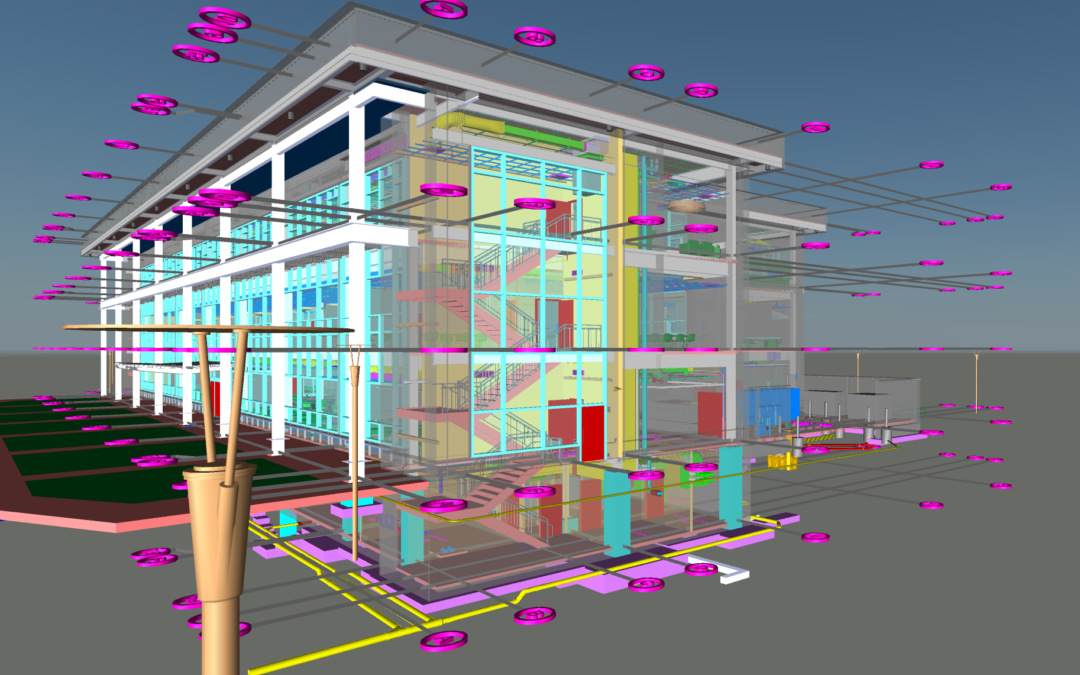Of the more than 20,500 students that Wilmington University serves, almost half live in New Castle County. To accommodate the growing student population, AMP worked with Wilmington University and EDiS Company on the land planning for a multi-phase expansion of their Brandywine campus. To accomplish phase one of this task, building a new three-story academic building, the AMP team provided BIM construction coordination for all trades involved in the center’s construction.
The team began by implementing the provided 2-D design drawings into a 3-D generated model. The model included fabrication drawings, shop drawing models, and facility information management models for managing the ins and outs of the building even after construction was finished. In this virtual 3-D space, the AMP team builds the entire building and all the systems required using software like Auto-CAD Fabrication MEP, Revit, and Navisworks to visualize and solve any issues that could arise before construction begins. This takes the planning, building, and operating phases to a much more productive level which translates into real savings in time, money, and utility for the owner.
Using this process alongside laser-scanning technology to calculate dimensions, they were able to find several areas of conflict in the design. Most importantly, they found the basement footprint and height was not adequate to allow for all the mechanical systems to fit. The air handler system itself was too large to fit into the building. If the plans for installing the air handler continued without correction, it would need to be entirely replaced, construction would halt, and the plans for that week (or month) would have been thrown off, stalling other trades on the job. The AMP team moved several items around to fit the mechanical system and suggested a new, smaller air handler. These issues were caught ahead of construction commencing, saving time and money that would have otherwise been spent fixing the issue during the actual construction process.
As a secondary task, the building model required special attention in regards to spatial awareness. The AMP team needed to prefabricate a mechanical system that did not impact the owner’s required architectural items. All ceilings, doors, and glass were to remain in the design related dimensions exactly as specified. This meant the AMP team would have to coordinate and make sure each trade met the proper space allowance without changing any of the aforementioned items.
With the use of softwares Auto-CAD Fabrication MEP and Revit, they were able to maintain the owner’s end goals for the project and fit the mechanical system in the project’s initial spaces. As an added bonus, the proper space provided by the BIM design allowed the mechanical systems to be fully-accessible by the maintenance team for the life of the building. This model containing valuable information and data about the building can be leveraged to save even more time and money in the future facility management life cycle. Lowering operating costs for repairs or future renovations is something every construction company strives for.

Wilmington University Campus Expansion Coordination

